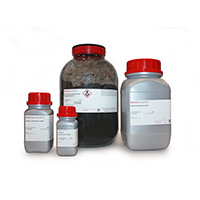Power up your lab with our top battery components

All batteries are made up of three major components: a negative electrode (anode), a positive electrode (cathode) and an electrolyte, a substance that reacts chemically with the anode and cathode. Metals, metal oxides and solvents are all essential in battery production. Thermo Fisher Scientific offers a range of quality products to support battery research and manufacturing.

Anode Materials
Anodes are traditionally composed of natural or synthetic graphite, but researchers are investigating other carbon allotropes (carbon black, fullerenes) and non-carbon materials (lithium foil, oxides of bismuth, germanium, silicon, and tin) that might have better electrochemistry.

Cathode Materials
Cathode materials typically include oxides of transition metals that can accommodate lithium by changing their oxidation states. We also offer many sodium-based and other salts for research into non-lithium technologies.

Electrolytes
Conventional electrolytes consist of an organic solvent (such as ethylene carbonate) with a dissolved salt. Solid electrolytes have the potential to eliminate leakage and increase battery safety. Our portfolio includes organic solvents, salts and inorganics, and additives.

Metals
Pure metals and metal alloys used in batteries include aluminum, cobalt, stainless steel and nickel in many forms, including foil, wires, powders and rods.

Separators and Binders
Separator materials used to control thermal conductance include polyethylene, polypropylene and other polymers in sheets or powder form.

Download Flyer
Chemicals for batteries: A total workflow solution